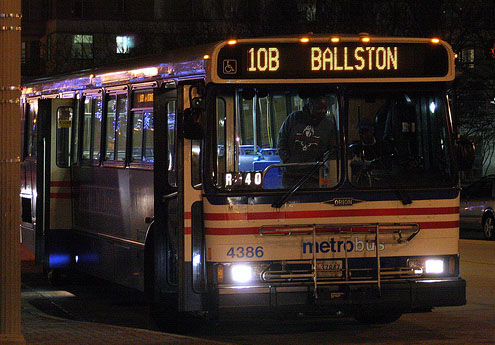Recent Trends in Bus and Rail Ridership [View all]


from the Transport Politic blog:
Recent Trends in Bus and Rail Ridership
Yonah Freemark
In researching the article I wrote last week for the Atlantic Cities on bus rapid transit (BRT), I wanted to provide a basic piece of evidence that offered support for the idea that typical bus operations were not offering the sort of service that attracted riders effectively. My sense (hardly a unique perspective, of course) was that bus services in cities around the country are often simply too slow and too unreliable for many people to choose them over automobile alternatives. Rail, particularly in the form of frequent and relatively fast light and heavy rail, may be more effective in attracting riders, but so might, the article hypothesizes, BRT services, which provide many of the service improvements offered by rail.
To provide such evidence, I compared ridership growth between 2001 and 2012 on urban bus and rail services on the ten U.S. transit networks that had rail routes in 2001 and did not expand them significantly during that period, as shown in the following chart. I excluded cities with rapidly growing rail networks, such as Los Angeles or Portland, under the presumption that the installation of a new rail line may result in a considerable shift from bus to rail simply because of changes in service patterns resulting from the opening of that line (e.g., riders may be encouraged to take rail rather than bus because certain bus routes are eliminated or re-routed with the opening).

The chart’s data — based on a limited sample of information — show that nine of ten urban rail and bus systems saw higher ridership gains along their rail routes than their bus routes (or less loss). The only exception noted here is Buffalo, whose bus routes saw a higher jump than the city’s light rail line. The conclusion we can take from this compelling, if limited, data point is that rail services do seem to be providing a greater benefit to passengers than buses do.*
Similarly, as the following chart demonstrates, when evaluating growth of ridership by mode as a share of overall system growth, the evidence suggests that rail lines, new or not, are more effective in contributing to building overall transit ridership than bus services (a slightly different metric than the above chart, which simply compares ridership by mode in 2001 with same-mode ridership in 2012). Of the 27 systems shown here, the rail lines of 22 of them contributed a higher proportion of ridership growth than the bus lines. ..................(more)
The complete piece is at:
http://www.thetransportpolitic.com/2014/03/03/recent-trends-in-bus-and-rail-ridership/



